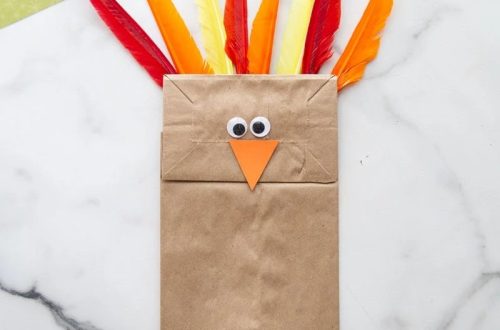The Rubik’s Cube, a seemingly simple 3x3x3 puzzle with colored squares, has captivated minds for generations. While solving it might seem daunting at first, with a little practice and the right approach, anyone can conquer this classic challenge. This guide will introduce you to the essential techniques used in the beginner’s method, breaking down the solving process into four manageable parts.

Part 1: Notation and The White Cross
Understanding Notation:
Before diving into solving, it’s crucial to understand how Rubik’s Cube enthusiasts communicate their moves. Each face of the cube is denoted by a single letter: U (Up), D (Down), L (Left), R (Right), F (Front), and B (Back). A prime symbol (‘) indicates a counter-clockwise rotation, while no prime signifies a clockwise rotation. For example, R represents a clockwise turn of the right face, and R’ represents a counter-clockwise turn of the right face.
Building the White Cross:
The first step is creating a white cross on the bottom face of the cube. Locate the white edge pieces with two non-white colors and position them on the bottom layer such that their non-white colors match the center squares of the corresponding faces (e.g., a white-red edge piece goes next to the red center). There are specific algorithms (a sequence of moves) to maneuver these edge pieces into their correct slots while preserving any existing progress on the white face. With practice, you’ll be able to execute these algorithms smoothly.
Part 2: Completing the First Layer and Second Layer
Positioning the White Corner Pieces:

After successfully forming the white cross on the Rubik’s Cube, the focus shifts to addressing the white corner pieces. These corner pieces are characterized by having three colored sides, and the objective is to position them on the bottom layer in such a way that each color matches the adjacent center squares on the first layer. Similar to the methodology used for the white edge pieces, specific algorithms come into play to strategically manipulate these corner pieces without disrupting the integrity of the white cross. Executing these algorithms with precision ensures that the corner pieces are positioned accurately, bringing solvers one step closer to completing the first layer of the Rubik’s Cube. This phase not only highlights the importance of precise maneuvers and algorithmic understanding but also fosters a deeper grasp of spatial relationships and enhances problem-solving skills, solidifying solvers’ proficiency in navigating the complexities of the Rubik’s Cube.
Solving the Second Layer:
Once the white cross and corners have been successfully positioned, attention turns to solving the second layer of the Rubik’s Cube. This step centers around manipulating the four middle squares of each side, excluding the corner pieces. The goal is to accurately position the colored edge pieces within the second layer, aligning the colors with the center squares above and below. At this stage, solvers deploy a series of specific algorithms to efficiently maneuver these edge pieces into their correct placements. By mastering the execution of these algorithms, solvers can streamline the process of maneuvering the edge pieces into their designated positions, bringing them closer to the completion of the intricate puzzle. This stage not only showcases the importance of strategic maneuvers and algorithmic understanding but also enhances solvers’ spatial reasoning and problem-solving skills, enhancing their overall proficiency in tackling the Rubik’s Cube.

Part 3: Orientating the Last Layer and Permuting the Last Layer
Orienting the Last Layer Edges:
Now that we have solved the first two layers, we move on to the top layer. The first step here is to orient all the edge pieces correctly. This means ensuring that each edge piece has its colored sides aligned with the corresponding center squares on the top and bottom layers. Algorithms are used to rotate these edge pieces without affecting the progress on the first two layers.
Permuting the Last Layer Corners:
The concluding phase of solving the Rubik’s Cube involves the arrangement of the four corner pieces of the last layer in their precise positions and orientations. Although this step may initially appear as the most daunting, with the strategic deployment of a few specific algorithms, achieving this feat is entirely feasible. By mastering and executing these final sequences of movements, you can successfully anchor each corner piece into its designated location, ensuring that their orientations align with the adjacent stickers. The successful execution of these algorithms marks the culmination of a challenging and intricate problem-solving journey, resulting in the gratifying reward of a fully solved Rubik’s Cube. By surmounting this final hurdle, solvers not only demonstrate their astute understanding of the cube’s mechanics and algorithms, but also affirm their proficiency in unraveling complex puzzles and refining their strategic thinking skills.

Part 4: Practice and Beyond
Practice Makes Perfect:
Mastering the art of solving the Rubik’s Cube, like any skill, necessitates dedicated practice. It’s normal for the process of learning and mastering algorithms to require time and effort. It’s crucial not to feel discouraged, and instead, maintain patience, consistency, and a positive mindset. Enjoying the journey is as important as the destination, so remember to have fun throughout the learning process. Various resources, including online tutorials and books available in libraries, provide comprehensive guidance and step-by-step instructions to aid in your Rubik’s Cube-solving endeavors. Accessing these resources empowers you to expand your knowledge, refine your techniques, and conquer the challenges presented by the Rubik’s Cube. Embracing the learning curve with patience, perseverance, and a positive attitude not only enhances your problem-solving skills but also fosters a deep sense of accomplishment as you progress towards unraveling the intricacies of this captivating puzzle.
Beyond the Beginner Method:
The beginner’s method is a fantastic foundation for solving the Rubik’s Cube. Once you’ve conquered this method, you can explore advanced techniques that can significantly improve your solving speed. These advanced methods involve more complex algorithms but allow you to solve the cube in a much shorter time frame.

With dedication and these essential techniques, you’ll be well on your way to solving the Rubik’s Cube and impressing your friends and family with your newfound puzzling prowess. Remember, practice is key, and a whole world of cubing out there is waiting for you to explore!




